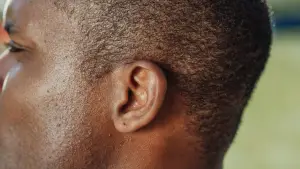Hearing loss affects millions of people worldwide, yet the science behind how we hear and how to preserve or restore that ability is evolving rapidly. In recent years, the field of auditory science has experienced a surge in innovative research studies and clinical trials that are reshaping how we approach hearing health. From exploring the brain’s complex role in sound processing to developing regenerative treatments for damaged inner ear cells, scientists and clinicians are uncovering new possibilities that were once considered science fiction.
This article delves into the most exciting breakthroughs in auditory science and highlights how cutting-edge research and clinical trials are paving the way for more effective treatments, smarter technology, and better quality of life for those with hearing challenges. Whether you’re living with hearing loss, caring for someone who is, or simply interested in the science of hearing, the insights shared here will offer a glimpse into the transformative work being done to advance the field.
The Importance of Research in Auditory Science
Behind every advancement in hearing care lies years—sometimes decades—of rigorous research. Auditory science, the study of how we hear and process sound, forms the foundation for understanding hearing loss and developing better interventions. Research in this field isn’t just about discovering what goes wrong when hearing declines; it’s also about finding smarter, faster, and more accessible ways to diagnose, treat, and even prevent auditory conditions.
One of the central challenges in auditory research is the complexity of the hearing system itself. The ear doesn’t work alone—it partners with the brain to interpret sound. When any part of this system is disrupted, whether by age, noise exposure, illness, or genetics, it can lead to hearing difficulties. Researchers aim to uncover the underlying mechanisms behind these disruptions. For example, some studies focus on how inner ear hair cells—critical for sound detection—are damaged over time or due to noise exposure, while others explore the impact of neural degradation on auditory processing in the brain.
In addition to understanding causes, auditory research is vital in testing the safety and effectiveness of hearing-related technologies. Innovations like digital hearing aids, cochlear implants, and bone-anchored devices wouldn’t exist without extensive laboratory and clinical study. Today, studies also evaluate the impact of hearing loss on mental health, cognitive function, and social engagement, making the case for treating hearing as a crucial component of overall wellness.
Another key area of research lies in early detection. With evidence mounting that untreated hearing loss is linked to dementia, depression, and increased fall risk, there’s a growing push to identify hearing issues as early as possible. Studies on screening methods and telehealth tools are helping make hearing care more accessible, particularly in underserved populations.
In sum, auditory science research not only deepens our understanding of hearing but also transforms that knowledge into real-world solutions. Every clinical trial, lab experiment, or technological innovation brings us closer to a future where hearing loss is detected earlier, treated more effectively, and even reversed in some cases.
Recent Breakthrough Studies in Hearing Research
The past decade has seen remarkable strides in auditory science, thanks to a series of groundbreaking research studies that are reshaping how we think about hearing loss and its treatment. These studies span from molecular biology to cognitive neuroscience and offer exciting glimpses into the future of hearing healthcare.
One of the most promising areas of research is hair cell regeneration. Hair cells in the cochlea are responsible for converting sound waves into electrical signals that the brain can interpret. Unfortunately, once damaged—due to age, loud noise, or certain medications—these cells do not naturally regenerate in humans. However, recent studies have identified specific genes and molecular pathways that could stimulate regrowth. For example, researchers have successfully activated dormant regenerative pathways in animal models, leading to the partial restoration of hearing. While still in the early stages, this research opens the door to potential treatments that could reverse certain types of sensorineural hearing loss.
Another major development is in gene therapy for hereditary hearing loss. Several forms of congenital or early-onset deafness are caused by single-gene mutations. Scientists are now using viral vectors to deliver healthy copies of these genes to the inner ear. In animal studies, this approach has shown the ability to partially restore hearing in mice born deaf. Early-phase human trials are beginning to assess the safety and efficacy of such techniques, raising hope for future personalized therapies based on an individual’s genetic profile.
On the neurological front, research into central auditory processing is revealing how the brain interprets sound—and how it compensates when hearing deteriorates. Functional MRI and EEG studies have shown that the brains of individuals with hearing loss must work harder to process speech, which may contribute to cognitive fatigue and decline. These insights are driving new strategies for auditory training and hearing aid algorithms designed to reduce the brain’s workload.
Other significant breakthroughs include the development of optogenetic cochlear implants, which use light instead of electrical stimulation to activate auditory nerve fibers. This method promises more precise sound perception, especially for music and tonal languages, compared to traditional implants. Though still experimental, these devices are a major leap forward in cochlear implant technology.
Each of these studies represents not just a scientific milestone but a step toward more effective, less invasive, and more personalized care for people with hearing loss. The pace of discovery in auditory science is accelerating, with researchers around the world contributing to a growing body of knowledge that could fundamentally change how we understand and treat hearing issues.
Innovative Clinical Trials and What They Mean for Patients
While laboratory research lays the groundwork, clinical trials are where scientific theories are tested in real-world scenarios. In auditory science, clinical trials serve as the crucial bridge between discovery and delivery—ensuring that new treatments, devices, and diagnostic tools are safe, effective, and accessible to those who need them most. Today’s clinical trials are pushing boundaries, giving patients with hearing loss opportunities to benefit from cutting-edge innovations earlier than ever before.
One of the most active areas of clinical research is drug therapy for hearing loss. Unlike traditional treatments that rely on hearing aids or implants, these trials test medications that may prevent or reverse hearing damage. For instance, several trials are evaluating drugs designed to protect inner ear cells from noise-induced trauma or to regenerate damaged hair cells. While most are still in Phase I or II, early results are promising, showing improved thresholds in auditory function and fewer side effects compared to older pharmaceutical attempts.
Another wave of trials is focusing on gene therapy for hereditary forms of deafness. A notable example is a trial targeting the OTOF gene, which is critical for sound transmission in the inner ear. In children born with mutations in this gene, researchers are testing a therapy that delivers functional gene copies via harmless viruses. Initial findings suggest the potential to restore partial hearing, offering hope for conditions once thought to be untreatable.
For those with profound hearing loss, cochlear implant enhancements are being studied in clinical settings. These trials aim to improve speech perception, reduce battery consumption, and offer better sound quality. Some experiments are testing hybrid devices that combine acoustic amplification and electrical stimulation, which may benefit people with residual low-frequency hearing.
Tinnitus treatments are also gaining momentum in clinical trials. From neurostimulation devices to novel medications, researchers are exploring multiple approaches to managing this often-debilitating condition. One such trial is investigating bimodal stimulation—where sound and touch-based stimuli are delivered simultaneously—to retrain the brain’s response to tinnitus. Early participants have reported significant reductions in perceived ringing and improved quality of life.
Equally important are trials focused on hearing aid technology. These studies examine how features like directional microphones, noise reduction algorithms, and AI-driven personalization affect real-world use. Some trials are even evaluating smartphone-based hearing aid apps that could offer low-cost solutions in remote or underserved areas.
For patients, participating in a clinical trial not only provides early access to potential new therapies but also contributes to the broader understanding of hearing health. While not all trials lead to approved treatments, each one helps refine the path forward—bringing us closer to a world where hearing loss can be more precisely managed, and in some cases, even reversed.
Technology and Tools Powering Hearing Research
Scientific progress in auditory science wouldn’t be possible without the powerful technologies that enable researchers to observe, measure, and manipulate the hearing system with unprecedented precision. From advanced imaging techniques to artificial intelligence, the tools behind today’s breakthroughs are as fascinating as the discoveries themselves.
One of the most transformative technologies is functional neuroimaging, such as fMRI (functional magnetic resonance imaging) and PET scans. These tools allow scientists to visualize brain activity in real-time while individuals process sounds. Such insights have deepened our understanding of how hearing involves not just the ears but the entire auditory pathway—including areas responsible for memory, attention, and emotion. For example, studies using fMRI have helped identify how the brain adapts to hearing loss and how hearing aids or implants alter neural activity.
Another crucial tool in auditory research is genetic sequencing. By analyzing the DNA of individuals with hearing impairments, researchers can identify specific mutations associated with congenital or progressive hearing loss. This has led to the classification of dozens of genetic hearing disorders and the development of targeted gene therapies. Rapid advancements in CRISPR and other gene-editing tools are now being explored in lab settings as a potential way to correct these mutations at the source.
Artificial intelligence (AI) is revolutionizing both research and clinical applications. In hearing aid development, AI algorithms can now learn from a user’s environment and adjust sound settings in real-time to enhance speech clarity and reduce background noise. In research, AI helps analyze large datasets—such as patient outcomes, genetic profiles, or audiometric trends—uncovering patterns that might otherwise go unnoticed.
Another technological innovation reshaping auditory science is the use of 3D bioprinting and organoids. Researchers are developing miniature, lab-grown models of the human cochlea—called cochlear organoids—that replicate the cellular structure of the inner ear. These organoids serve as valuable platforms for testing drugs, gene therapies, and other interventions before moving to human trials, significantly speeding up the research timeline.
Wearable technology is also playing a larger role in both data collection and therapy. Devices that monitor sound exposure in daily life help researchers understand how environmental noise affects hearing over time. Some wearables are being designed to deliver therapeutic stimulation, such as low-level sound therapy or neurofeedback for tinnitus.
Finally, cloud-based platforms and teleaudiology tools have expanded access to both research and care. These platforms allow researchers to conduct remote trials, gather real-time feedback from participants, and include more diverse populations. For patients, teleaudiology makes it easier to access hearing tests, adjust devices, or participate in studies without the need to travel.
Together, these tools are not only accelerating the pace of discovery but also ensuring that the research is more inclusive, accurate, and directly applicable to real-world hearing challenges.
What These Advances Mean for the Future of Hearing Health
The rapid progress in auditory science is more than a series of scientific achievements—it represents a future where hearing health becomes more personalized, effective, and proactive. As research and clinical trials continue to push boundaries, the implications for individuals with hearing loss—and society as a whole—are profound.
Perhaps the most transformative shift is the move toward precision hearing care. With genetic testing, detailed auditory profiling, and AI-powered diagnostics, treatments can be tailored to the unique needs of each patient. For example, instead of relying on one-size-fits-all hearing aids, future users might receive devices optimized for their specific auditory processing patterns, lifestyle, and even cognitive load. This level of personalization could dramatically improve user satisfaction and long-term hearing outcomes.
Moreover, emerging therapies offer new hope for reversing hearing loss, not just managing it. While current technologies like cochlear implants and hearing aids enhance sound perception, regenerative treatments aim to restore the inner ear’s natural function. Within the next decade, we may see the first approved therapies that regrow hair cells, repair genetic defects, or prevent noise-induced damage—offering potential solutions for conditions previously considered permanent.
These advancements also support a shift toward earlier intervention. As the links between hearing loss and conditions like dementia, depression, and social isolation become clearer, there’s increasing emphasis on early detection and treatment. Innovative screening tools—including mobile apps and teleaudiology services—can help identify hearing problems before they become debilitating, especially in older adults who might delay seeking help.
For underserved populations, technology is breaking down barriers to access. Remote clinical trials, app-based hearing evaluations, and low-cost hearing amplification devices are making hearing care more accessible worldwide. This democratization of hearing health is critical in addressing global disparities and ensuring that breakthroughs benefit everyone, not just those in developed regions.
On a broader scale, these innovations could reshape how society views hearing loss. As treatments become more effective and stigma declines, individuals may feel more empowered to seek care and maintain their auditory health. Workplaces, public spaces, and healthcare systems may also adapt, becoming more inclusive and responsive to the needs of people with hearing impairments.
Ultimately, the breakthroughs happening in auditory science today are laying the foundation for a future where hearing loss is not an inevitable part of aging but a manageable—and in some cases, reversible—health condition. With continued investment in research, public awareness, and equitable access to care, the future of hearing health looks more promising than ever.
Conclusion
The landscape of auditory science is undergoing a remarkable transformation. From lab-based discoveries to real-world clinical trials, researchers and clinicians are working tirelessly to redefine what’s possible in hearing health. What was once deemed permanent—such as age-related hearing loss or congenital deafness—is now being challenged by emerging therapies, smarter technology, and deeper insights into how we hear and process sound.
Throughout this article, we’ve explored how foundational research is uncovering the complex mechanisms behind hearing, how clinical trials are translating those discoveries into patient-ready treatments, and how technology is making care more personalized and accessible. These efforts are converging to offer new hope—not only for managing hearing loss but potentially preventing or reversing it.
For individuals living with hearing challenges, these innovations mean earlier detection, better outcomes, and a higher quality of life. For caregivers and loved ones, it offers new tools to support those affected. And for the broader community, it reinforces the importance of treating hearing health as a vital part of overall well-being.
Staying informed about these advancements isn’t just about following scientific progress—it’s about understanding the possibilities for a healthier, more connected future. Whether you’re considering treatment options, supporting a loved one, or simply curious about the science, the future of hearing health is brighter than ever, thanks to the groundbreaking work being done in auditory science.
FAQ
What is the most promising area of hearing research right now?
One of the most promising areas is hair cell regeneration. Scientists are exploring ways to regrow the tiny sensory cells in the inner ear that are responsible for detecting sound. If successful in humans, this research could potentially reverse certain types of sensorineural hearing loss caused by noise exposure, aging, or medication.
Are there any clinical trials currently available for people with hearing loss?
Yes, many clinical trials are actively recruiting participants with various types of hearing loss. These range from trials on new hearing aid technologies to experimental drugs and gene therapies. Individuals interested in participating can search clinical trial databases like ClinicalTrials.gov or consult with their audiologist to learn more.
Can hearing loss really be reversed?
While most current treatments manage rather than reverse hearing loss, recent breakthroughs in gene therapy and hair cell regeneration suggest that reversal may become possible for certain types of hearing loss. These treatments are still under development and are currently undergoing clinical trials to assess their safety and effectiveness.
How do I know if I qualify for a hearing-related clinical trial?
Eligibility varies depending on the trial’s goals. Some trials target specific types of hearing loss, age groups, or genetic conditions. Most trials have detailed inclusion and exclusion criteria. A healthcare provider or audiologist can help determine if you meet the qualifications for any ongoing studies.
What role does the brain play in hearing loss research?
The brain plays a crucial role in processing sound, and many studies are now focused on how hearing loss affects brain function. Researchers use brain imaging tools to study how people with hearing loss process speech and sound differently. This knowledge is helping improve hearing aid and cochlear implant designs to reduce cognitive strain and enhance clarity.
“This article is for informational purposes only and is not a substitute for professional medical advice, diagnosis, or treatment. If you are concerned about your hearing or ear health, please consult a qualified healthcare provider.”






